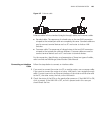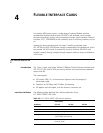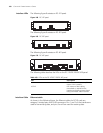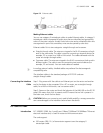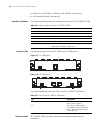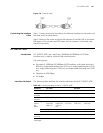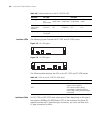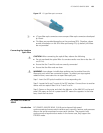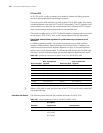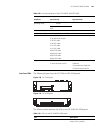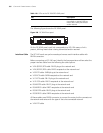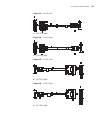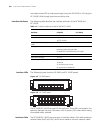
FIC-2SAE/FIC-4SAE/FIC-8SAE 153
Figure 177 LC-type fiber-optic connector
n
■ LC-type fiber-optic connectors were compact fiber-optic connectors developed
by Lucent.
■ The fibers are provided depending on the purchased SFPs. Therefore, please
provide information on the SFPs when purchasing FICs; by default, the fibers
are not provided.
Connecting the Interface
Optic Fiber
c
CAUTION: When connecting the optical fiber, observe the following
■ Do not over-bend the optical fiber. Its curvature radius must be no less than 10
cm (3.9 in).
■ Ensure that the Tx and Rx ends are correctly connected.
■ Ensure that the fiber ends are clean.
w
WARNING: Laser danger: Invisible laser radiation may be emitted from the
fiber-optic ports which are connected to lasers. To protect your eyes against
radiation harm, never stare into an open fiber-optic port.
Step 1: Insert the SFP optical module into its corresponding slot.
Step 2: Locate the Rx and Tx ports of the GEF interface. Connect them to another
device with two optical fibers: Rx to Tx and Tx to Rx.
Step 3: Power on the router and check the behavior of the LINK LED on the card
panel. ON means an Rx link is present and OFF means the opposite. In the latter
case, check the line status.
FIC-2SAE/FIC-4SAE/FIC
-8SAE
Introduction FIC-2SAE/FIC-4SAE/FIC-8SAE, 2-/4-/8-port enhanced high-speed
synchronous/asynchronous serial interface card, transmits, receives, and processes
data on the synchronous/asynchronous serial interface. They support both
synchronous and asynchronous modes. In the former case, they support the
DTE/DCE mode.



